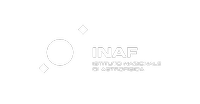EST
Abstract: This is the project definition for the Conceptual Design Study of the large aperture European Solar Telescope (EST). EST is a pan-european project involving 29 partners from 14 different countries. A consortium EAST (European Association for Solar Telescopes) exists with the aim, among others, of undertaking the development of EST, to keep Europe in the frontier of Solar Physics in the world. EST will be optimised for studies of magnetic coupling between the deep photosphere and upper cromosphere. This will require diagnostics of the thermal, dynamic and magnetic properties of the plasma over many scale heights, by using multiple wavelenght imaging, spectroscopy and spectropolarimetry. The EST design will strongly emphasise the use of a large number of visible and near-infrared instruments simultaneously, thereby improving photon efficiency and diagnostic capabilities relative to other existing or proposed ground-based or space-borne solar telescopes. To achive these goals, EST must specialise in high spatial and temporal resolution using instruments that can efficiently produce two-dimensional spectral information. The study aims at demonstrating the scientific, technical and financial feasibility of EST. It includes key aspects needed for a conceptual design of the whole telescope, such as optomechanical design, cooling mechanisms, adaptive optics, instrumentation and control. Different existing alternatives will be analysed for all systems and subsystems, with decisions taken on the most adequate ones that are compatible with the scientific goals and the technical strategies. Technical specifications will be given at the end of the Design Study for all systems and subsystems.
Dettagli tecnici:
- Struttura INAF: Dipartimento Progetti
- Bando: FP7-Infrastructures-2007-1
- Riferimento: 212482
- Inizio: 01/02/2008
- Durata: 36 mesi
- Coordinamento: IAC

